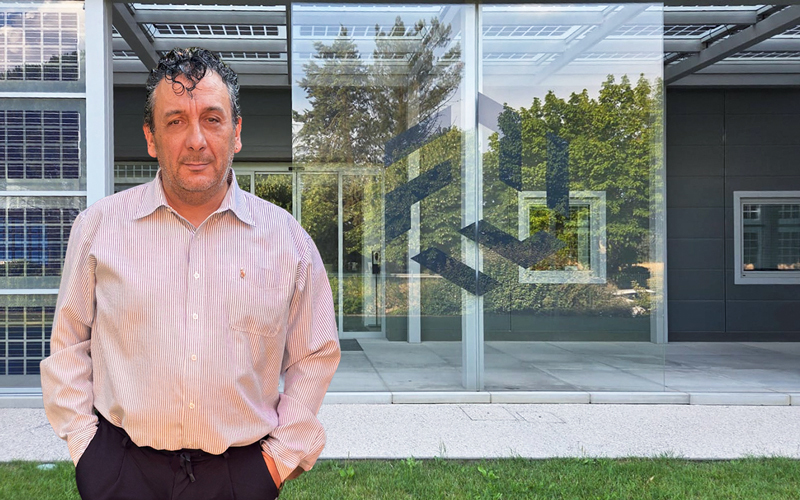
Operating in China means more than simply relocating production — it requires becoming part of a hyper-efficient and highly adaptive industrial system. In this interview, Eng. Leonardo Laganà, Business Director of the Control Systems Business Unit at FAIST, shares his insights on the systemic factors driving competitiveness in China’s automotive supply chain.
Is labour cost the main driver behind price competitiveness in China, or is that an oversimplification?
Leonardo: That’s one of the most common — and most inaccurate — stereotypes. The real competitive advantage in China doesn’t come from wages, which are rising, but from the systemic efficiency of its industrial model. It’s a fully optimized system, from design to delivery. Studies by Roland Berger and McKinsey show that, with equal technology and specs, powertrain components can be produced in China at 30–50% lower cost than in Europe, even compared to highly efficient Germany. This is due to a deeply rooted design-to-cost mindset supported by three core pillars: supply chain proximity, pragmatic automation, and an active, targeted industrial policy.
What makes China’s supply chain more efficient than that of European industrial districts?
Leonardo: Districts like Suzhou, where FAIST is based, allow a Tier 1 supplier to access a dense network of specialized suppliers within a 50 km radius. This cuts lead times, slashes logistics costs, eliminates the need for intermediate warehousing, and ensures fast response to OEM schedule changes. Many companies, including FAIST, adopt a hybrid automation model, with modular, flexible systems. Collaborative robots are used not to replace workers, but to reduce idle time and optimize process flow.
Does industrial policy play a role in this competitiveness?
Leonardo: Absolutely. In China, local authorities act as real enablers. They offer up to 40% subsidies for automated equipment, energy discounts, tax breaks for EV projects, and training vouchers. A digitalization investment can pay for itself in two years. In Europe, it often takes the authority six months just to publish the forms needed to apply for incentives.
In the past, relocating operations was enough to enter the Chinese market. What’s changed today?
Leonardo: China no longer welcomes suppliers just for being international. They’re assessed, measured, and replaced if needed. Entering the market today means becoming part of its industrial ecosystem, not just exporting a Western model. Suppliers must localize their thinking — not just their production. R&D centers must be local and fully integrated with Chinese customer development cycles. They must offer cost-saving solutions and prototype rapidly. They’re not suppliers; they’re co-design partners.
What are the critical success factors today?
Leonardo: Response time is everything. RFQs often require answers within 48 hours — and not just pricing, but alternatives, options, and technically documented solutions. Local presence is essential, including application engineers who can interface with customers in real time and respond promptly and independently from HQ. Solving customer problems quickly is a must.
What are the key levers for European suppliers to operate effectively in China?
Leonardo: Consistency is key. It’s not enough to excel in one area — like having a strong product or local R&D — if you’re slow on digital flows or dependent on European suppliers. In China, competitiveness is systemic: unless all the pieces are in place, you’re invisible. The key levers are: local R&D, digitalization, local supply chain, frugal innovation, and of course, relationships.
What does “local Research & Development” really mean?
Leonardo: It’s no longer about peripheral technical support. You need real development centers capable of co-designing in real time with Chinese customers, joining daily technical calls, and proposing design-to-cost solutions. Being on-site means participating, not just reacting. That’s why at FAIST Emission Controls in Suzhou, we’re strengthening our engineering team with both experienced professionals and young engineers, building an R&D team independent from our Business Unit’s headquarter, yet aligned with FAIST’s overall technical strategy.
And what does digitalization require?
Leonardo: It’s a baseline requirement. A supplier must be able to enter data into RFQ-compatible portals, with documentation that’s traceable and accessible in real time. In China, transparency is competitiveness: customers want real-time access to technical documentation and the ability to visit your site without notice. At FAIST, we use a local ERP, online quotation tools, and various portals to upload all required documentation. We’re also open to adopting new technologies that reduce development and operational inefficiencies.
Third lever: a strong local supply chain.
Leonardo: Integrating local suppliers is essential. That means transferring know-how, sharing tools, and working on mid-term contracts. It ensures responsiveness, cost control, and resilience. Those who depend on overseas suppliers are too slow for the Chinese pace. Suppliers’ engineers here have grown and now offer innovative, lower-cost solutions. Thanks to industrial clusters, developments happen much faster than in Europe. In the coming months, nearly 100% of the products used by FAIST Emission Controls in Suzhou will come from local sources — primarily from the Suzhou, Kunshan, and Wuxi districts, all within a short distance.
Fourth lever: frugal innovation. What do you mean?
Leonardo: It’s not about the most advanced tech — it’s about the most suitable. Simplify geometries, use local materials, eliminate unnecessary operations: do more with less. That’s the essence of the Chinese approach. Europe excels in engineering, but in China, engineering must be pragmatic. At FAIST, for instance, we’ve installed conventional automatic lines for high-volume, low-variability products, while also developing flexible new lines based on collaborative robots that support operators and can be easily reconfigured.
And finally, relationships.
Leonardo: In China, relationships are the glue that holds everything together. The on-site engineer, the project manager who replies on WeChat, the supplier who joins reviews without long notice — these are the real assets. Daily interaction builds operational trust, and in China, trust is worth as much as price. Customers must always feel welcome at your facility, and suppliers must proactively propose cost-saving solutions. Customers don’t want to organize pre-arranged value engineering events — they expect suppliers to initiate such initiatives. And they welcome them, incorporating such proposals into their own validation plans.
For European companies operating in China, the challenge is not simply to compete — but to integrate, adapt, and lead within a radically different industrial environment. As Eng. Leonardo Laganà highlights, FAIST Control Systems is well positioned thanks to its long-standing local presence, strong R&D capabilities in Suzhou, and a pragmatic, partnership-based approach that reflects the expectations of the Chinese market. These strengths allow FAIST to respond with agility, deliver tailored solutions, and continue building trust with leading OEMs and Tier 1 customers across China.



